| Date | Text | |
|---|---|---|
30 Nov 1899

Johannes Rydberg |
Johannes Rydberg (chemistry) Johannes Rydberg refines the expression for observed hydrogen line wavelengths. |
|
30 Nov 1899

Richard Dixon Oldham |
Richard Dixon Oldham (earth sciences) Richard Dixon Oldham distinguishes between primary, secondary and tertiary waveforms as recorded by seismometers. |
|
30 Nov 1899
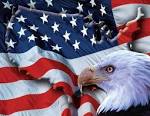
American |
American (exploration) American explorer Robert Peary first sights Kaffeklubben Island, the northernmost point of land on Earth. |
|
30 Nov 1899

Hugo de Vries |
Hugo de Vries (genetics) Hugo de Vries publishes the results of his experiments in Mendelian inheritance. |
|
30 Nov 1899

David Hilbert |
David Hilbert (mathematics) David Hilbert states his list of 23 problems which show where some further mathematical work is needed. |
|
30 Nov 1899
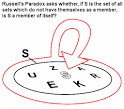
Russell's paradox |
Russell's paradox (mathematics) Russell's paradox is first discovered by Ernst Zermelo but he does not publish it, and it is known only to Hilbert, Husserl and other members of the University of Göttingen. |
|
30 Nov 1899

Gaston Tarry |
Gaston Tarry (mathematics) Gaston Tarry confirms Euler's conjecture that no 6×6 orthogonal Graeco-Latin square is possible. |
|
30 Nov 1899

Alfred Young |
Alfred Young (mathematics) Alfred Young introduces the Young tableau. |
|
30 Nov 1899

Kodak |
Kodak (photography) Kodak introduce their first Brownie (camera). |
|
30 Nov 1899

Gamma rays |
Gamma rays (physics) Gamma rays discovered by Paul Villard while studying uranium decay. |
|
30 Nov 1899
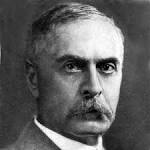
Karl Landsteiner |
Karl Landsteiner (physiology) Karl Landsteiner makes the first discovery of blood types, identifying the ABO blood group system. |
|
30 Nov 1899

Jokichi Takamine |
Jokichi Takamine (physiology) Jokichi Takamine and Keizo Uenaka discover adrenaline. |
|
30 Nov 1899

Sigmund Freud |
Sigmund Freud (psychology) Sigmund Freud's Die Traumdeutung (The Interpretation of Dreams) is published. |
|
30 Nov 1899
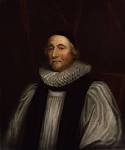
Richard J. Ussher |
Richard J. Ussher (zoology) Richard J. Ussher and Robert Warren publish The Birds of Ireland. |
|
30 Nov 1899

Ernest Gibbins |
birth Ernest Gibbins Ernest Gibbins (killed 1942), entomologist. |
|
13 Jan 1900
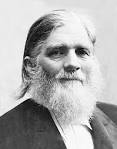
Peter Waage |
death Peter Waage Peter Waage (born 1833), chemist. |
|
22 Jan 1900
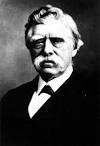
David E. Hughes |
death David E. Hughes David E. Hughes (born 1831), inventor. |
|
27 Feb 1900

Aspirin |
Aspirin In 1900, German chemist Felix Hoffmann was issued a U.S. patent for “Acetyl Salicylic Acid” (No. 644,077). It was assigned to the Farben-Fabriken of Elberfeld Company, of New York. Hoffmann had discovered the chemical compound on 10 Aug 1897 while a researcher at the Bayer company. It was marketed as Apirin, the familiar pain reliever, which at the time was a trademarked name. It was first sold in Germany in powder form, from 1 May 1899, and later in the more convenient tablet form, from 1 Jan 1915. |
|
06 Mar 1900
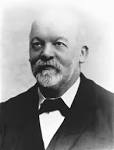
Gottlieb Daimler |
death Gottlieb Daimler Gottlieb Daimler (born 1834), German engineer, automotive pioneer. |
|
09 Mar 1900

Howard Aiken |
birth Howard Aiken Howard Aiken (died 1973), computing pioneer. |
|
19 Mar 1900

Frédéric Joliot |
birth Frédéric Joliot Frédéric Joliot (died 1958), physicist. |
|
01 Apr 1900
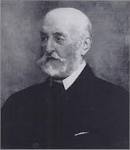
George Jackson Mivart |
death George Jackson Mivart George Jackson Mivart (born 1827), English biologist. |
|
25 Apr 1900

Wolfgang Pauli |
birth Wolfgang Pauli Born 25 Apr 1900; died 15 Dec 1958 at age 58. Austrian-American physicist who was awarded the Nobel Prize for Physics in 1945 for his discovery in 1925 of the Pauli exclusion principle, which states that in an atom no two electrons can occupy the same quantum state simultaneously. This principle clearly relates the quantum theory to the observed properties of atoms. |
|
25 Apr 1900

Wolfgang Ernst Pauli |
birth Wolfgang Ernst Pauli Wolfgang Ernst Pauli (died 1958), physicist. |
|
26 Apr 1900
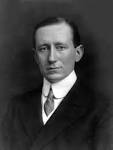
Guglielmo Marconi |
Guglielmo Marconi (physics) Guglielmo Marconi patents the tuned circuit. |
|
26 Apr 1900

Charles Richter |
birth Charles Richter Charles Richter (died 1985), geophysicist and inventor. |
|
28 Apr 1900

Jan Oort |
birth Jan Oort Jan Oort (died 1992), astronomer. |
|
10 May 1900

Cecilia Payne |
birth Cecilia Payne Born 10 May 1900; died 7 Dec 1979 at age 79. Cecilia Helena Payne-Gaposchkin was an English-American astronomer who was the first to apply laws of atomic physics to the study of the temperature and density of stellar bodies, and the first to conclude that hydrogen and helium are the two most common elements in the universe. During the 1920s, the accepted explanation of the Sun's composition was a calculation of around 65% iron and 35% hydrogen. At Harvard University, in her doctoral thesis (1925), Payne claimed that the sun's spectrum was consistent with another solution: 99% hydrogen with helium, and just 1% iron. She had difficulty persuading her superiors to take her work seriously. It was another 20 years before Payne's original claim was confirmed, by Fred Hoyle. |
|
22 May 1900

Honor Fell |
birth Honor Fell Honor Fell (died 1986), biologist. |
|
10 Jun 1900

Wilhelm Friedrich (Willy) Kühne |
death Wilhelm Friedrich (Willy) Kühne Died 10 Jun 1900 at age 63 (born 28 Mar 1837). Wilhelm Friedrich Kühne was a German physiologist known for his researches on vision and the chemical changes occurring in the retina under the influence of light. His original work falls into two main groups—the physiology of muscle and nerve, which occupied the earlier years of his life, and the chemistry of digestion, which he began to investigate while at Berlin with Virchow. He was proposed the word enzyme meaning "in yeast" (1878), and he isolated trypsin from pancreatic juice. He demonstrated usefulness of cytophysiological investigations for solving problems of general physiology. He devised an "artificial eye," discovered the light sensitive "visual purple" in the retina and was first to perceive migrating pigments in the living retina (1877-78). |
|
02 Jul 1900
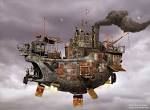
airship |
airship (aeronautics) The first airship flight is made by the LZ1 designed by Ferdinand von Zeppelin. |
|
09 Jul 1900

Frances McConnell-Mills |
birth Frances McConnell-Mills Frances McConnell-Mills, born Frances Mary McConnell (died 1975), toxicologist. |
|
15 Jul 1900

Thomas Francis Jr. |
birth Thomas Francis Jr. Born 15 Jul 1900; died 1 Oct 1969 at age 69. American physician, physician, virologist and epidemiologist who was the first in the U.S. to isolate the virus influenza A (1934) and showed that there are other strains, such as influenza B (1940). Francis developed a polyvalent vaccine effective against both strains and conducted research that led to the development of antiserums for the treatment of pneumonia. In 1953, he was asked to design, supervise, and evaluate the field trials of the polio vaccine developed by his former protegé, Jonas Salk. The trials were of unprecedented scope and magnitude, involving about 1.8 million children from across the U.S., Canada, and Finland. On 12 Apr 1955, Francis announced that the Salk vaccine was indeed "safe, effective, and potent." |
|
18 Jul 1900

Johann Gustav Christoffer Kjeldahl |
death Johann Gustav Christoffer Kjeldahl Died 18 Jul 1900 at age 50 (born 16 Aug 1849). who originated the Kjeldahl method for the laboratory determination of the nitrogen content in organic compounds. This was of great value for applications in agriculture, medicine and drug manufacture. It replaced the former procedure that were inexact and time-consuming, and remains in use to the present time. From 1876 until his death, he was the director of the Carlsberg laboratory (a research institution of the Carslberg brewery). He developed his method of measuring nitrogen content to investigate the amount of protein in grain, which was relevant to protein transformation during beer fermentation. The method was reported to the Chemical Society of Copenhagen on 7 Mar 1883. |
|
25 Aug 1900

Hans Adolf Krebs |
birth Hans Adolf Krebs Hans Adolf Krebs (died 1981), medical doctor and biochemist. |
|
26 Aug 1900

Hellmuth Walter |
birth Hellmuth Walter Hellmuth Walter (died 1980), engineer and inventor. |
|
14 Oct 1900

W. Edwards Deming |
birth W. Edwards Deming Born 14 Oct 1900; died 20 Dec 1993 at age 93. W(illiam) Edwards Deming was an American statistician, the father of "Total Quality Management." After WW II, he contributed to Japan's economic recovery by recommending statistical methods of quality control in industrial production. His method embraced carefully tallying product defects, examining their causes, correcting the problems, and then tracking the results of these changes on subsequent product quality. In his career before the war, he had developed statistical sampling techniques that were first used in the 1940 U.S. census. From the 1980's in the U.S. Deming taught quality control through the statistical control of manufacturing processes for companies such as Ford, Xerox, and GM. |
|
16 Oct 1900

Henry Acland |
death Henry Acland Henry Acland (born 1815), English physician. |
|
07 Dec 1900
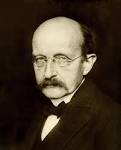
Max Planck |
Max Planck (physics) Max Planck states his quantum hypothesis and law of black body radiation, marking the birth of quantum physics. |
|
09 Dec 1900

Joseph Needham |
birth Joseph Needham Joseph Needham (died 1995), biochemist and writer on the history of science and technology in China. |
|
12 Dec 1900
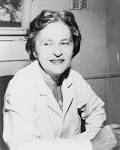
Maria Telkes |
birth Maria Telkes Born 12 Dec 1900; died 2 Dec 1995 at age 94. Hungarian-American physical chemist who pioneered in the application of solar energy to water distillation and home heating. She immigrated to the U.S. in 1925, worked as a biophysicist (1926-37), and naturalized in 1937. As a civilian adviser to the U.S. Office of Scientific Research and Development during WW II, she worked out a solar heated water distillation system to make sea water potable. In the late 1940's, she designed a system of chemical storage of solar energy for the first solar-heated house, a project of MIT constructed t in Dover, Massachusetts. She developed a solar-powered stove, and in the 1970s, experimented with an air-conditioning system that stored cool night air for use during the heat of the next day. |
|
23 Dec 1900
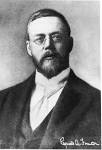
Reginald Fessenden |
Reginald Fessenden (physics) Reginald Fessenden, experimenting with a high-frequency spark transmitter, successfully transmits speech over a distance of about 1.6 kilometers (one mile), from Cobb Island, Maryland, which appears to have been the first audio radio transmission. |